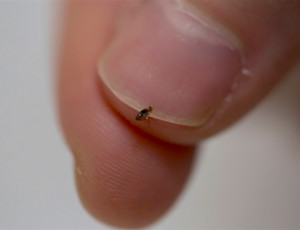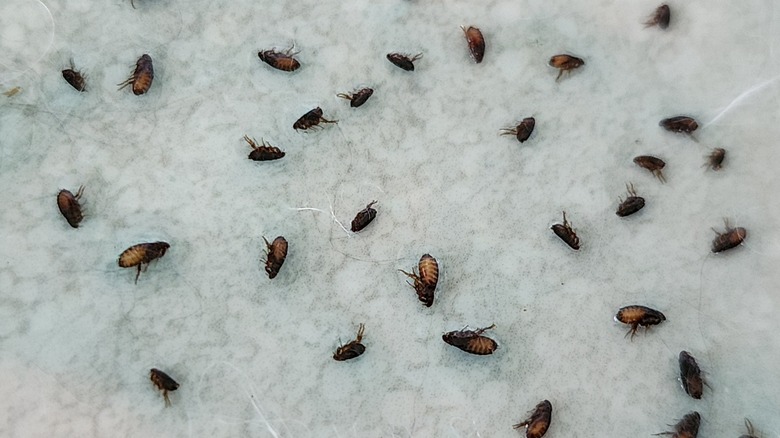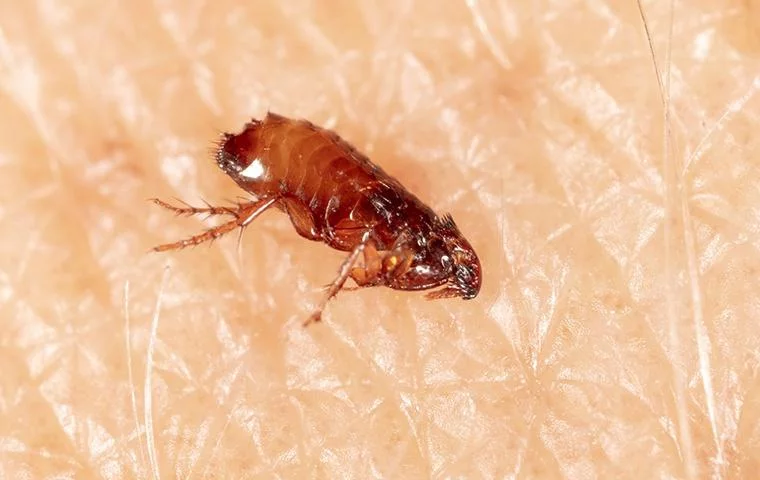Flea Removal Services by Pest Control Xperts in Watsonville
Serving homes, apartments, dormitories, hotels, and healthcare offices throughout Watsonville, Aromas, Freedom, Castroville, California, and Surrounding Areas
Professional Flea Control for Watsonville & Freedom
You’ve noticed your pet scratching more than usual, or perhaps you’ve been bitten yourself, finding small, itchy red welts on your ankles and legs. You’ve tried flea shampoos, collars, and maybe even a bug bomb from the store, but the problem keeps coming back. That frustrating cycle of discovery and temporary relief is the core of the problem. Those fleas you see are just a small fraction of a much larger, hidden infestation of eggs, larvae, and pupae that DIY methods can’t reach.
At Watsonville Pest Control Xperts, we understand that a DIY approach to a flea problem creates an illusion of control. It feels like you are doing something, but the reality is that the problem is simply getting worse just out of sight. We are here to offer a definitive, lasting solution. As your local flea control experts serving Watsonville, Freedom, Aromas, and Corralitos, we know the specific challenges of our area. We go beyond the visible fleas to eradicate the entire infestation, restoring your peace of mind and your home.
Why Fleas Appear in Watsonville and Surrounding Communities
The unique climate and urban factors of our region are a major factor in the constant battle against fleas. With our long, warm summers, fleas are constantly seeking a host to feed on and a moist, warm environment to lay their eggs. A pet that spends time outdoors can easily pick up fleas from a neighbor’s yard, a public park, or a local trail. When they come indoors, they bring the fleas with them.
Our local architecture also creates vulnerabilities. Older homes with crawl spaces and wooden floors can provide ideal hiding spots for flea eggs and larvae. New developments in Freedom and expanding residential areas can also be at risk, especially if they are built near fields or wooded areas where fleas thrive. Fleas are relentless. They will exploit any weakness to find a host and a safe place to reproduce.
Types of Fleas Commonly Found in California
While there are many species of fleas, the most common one to infest homes and businesses is the cat flea (Ctenocephalides felis). Knowing their behavior and how to identify them is the first step toward effective fleas control.
The Cat Flea
The cat flea is the most common flea in our area. They are tiny, brownish-black, and have powerful legs that allow them to jump great distances. They are a major source of infestation in homes with pets, as they feed on the blood of cats and dogs. However, they will also bite humans, leaving behind small, itchy welts. The adult fleas are only a small part of the problem. Their eggs and larvae can be found in carpets, furniture, and pet bedding, making a comprehensive treatment essential.
Problems Fleas Create for Homes and Businesses
The sight of a flea is unsettling enough, but an unchecked infestation can lead to far more serious problems.
- Health Risks: Flea bites can cause intense itching and discomfort, leading to a risk of secondary skin infections from scratching. Fleas can also transmit diseases and parasites to both humans and pets, including tapeworms.
- Allergies: Some people and pets can have a severe allergic reaction to flea bites, leading to a condition known as flea allergy dermatitis.
- Daily Frustration: The constant presence of fleas is a source of stress and frustration. It can make you feel helpless in your own home, unable to find relief from the problem.
Signs of an Escalating Flea Infestation
What are the signs of a major flea infestation? If you’ve been asking, “Why do I keep getting fleas in my house?”, you are likely already seeing these clear warnings:
- Persistent Bites: Finding small, red, itchy bites on your ankles and legs. The bites often appear in clusters or a line.
- “Flea Dirt”: Discovering tiny, black specks in your pet’s fur, on their bedding, or in carpets. This is actually flea feces, and it will turn red if you place it on a wet paper towel.
- Jumping Fleas: Seeing tiny, black insects jumping on your carpets, furniture, or pets.
- Itching Pets: Your pet is scratching, licking, or biting themselves more than usual. This is often the first sign of a flea problem.
Why Professional Extermination is Essential for Flea Removal
You’ve tried the shampoos, the collars, and the bug bombs. You’ve asked, “How to get rid of fleas in the kitchen permanently?”. The reason your efforts have failed is that they only target the adult fleas, not the hidden eggs, larvae, and pupae. These DIY solutions create an illusion of control undone by the fact that the problem is not a simple surface issue. The majority of the flea population (about 95%) is in the immature stages, hiding in carpets, furniture, and pet bedding. A store-bought product will not reach them.
A professional flea exterminator service is the only way to achieve true colony elimination. We use a variety of proven strategies, including a combination of targeted product applications and insect growth regulators that prevent fleas from maturing. This is a scientific, targeted approach that gets to the root of the problem and breaks the flea life cycle.
Our Flea Removal Method
Our process is built on a foundation of expertise and effective strategies.
1. Consultation & Inspection
We begin with a thorough flea inspection of your property. We don’t just look for adult fleas. We look for “flea dirt” and other signs of an infestation, and we identify the source of the problem. We inspect carpets, furniture, pet bedding, and other areas where fleas thrive.
2. Customized Treatment Plan
Based on our findings, we develop a custom plan that is tailored to your specific situation. This may include a combination of targeted treatments, including a product that kills adult fleas and an insect growth regulator that prevents the immature fleas from developing.
3. Follow-Up & Prevention
Once the infestation is eliminated, we provide advice on best practices for pest prevention to ensure that fleas cannot return. We offer follow-up services to monitor your property and ensure that the problem has been completely resolved.
4. Eradication
Once the treatment plan is in place, we move forward with the eradication process. We use a variety of proven methods and products to safely and efficiently eliminate the fleas from your home or business. Our environmentally friendly pest control options ensure that we are not only effective but also responsible. We focus on targeted treatments to minimize impact.
Why Watsonville Relies on Our Expertise
We have deep regional familiarity with the specific pest challenges of Watsonville and the surrounding areas. Our focus is on providing a complete solution, not a temporary one. We are committed to a responsible and effective pest control for fleas, using targeted methods that are safe for your family and pets. We are not just exterminators, we are a dedicated part of your community, committed to protecting your homes and businesses from pests.
Related Topics
The Flea Life Cycle and Why It Matters
The flea life cycle is a major reason why DIY flea control fails. The flea has four life stages: egg, larva, pupa, and adult. The adult flea is the only stage that feeds on blood. The eggs and larvae, which make up the majority of the population, are hidden in carpets and furniture, where they are resistant to most store-bought sprays. A professional treatment targets all four stages, breaking the life cycle and preventing a new infestation from emerging.
Are Fleas a Threat to Human Health?
While fleas are primarily a threat to pets, they can also bite humans. Their bites can cause skin irritation and can transmit diseases, including tapeworms. In some cases, a severe infestation can even lead to anemia in young pets.
Tips for Preventing a Flea Infestation
The best way to deal with a flea problem is to prevent it from happening in the first place. This includes:
- Regularly vacuuming carpets and furniture, especially in areas where pets rest.
- Washing pet bedding in hot water.
- Treating your pets with a professional-grade flea preventative.
- Keeping your yard well-maintained to reduce outdoor flea habitats.
These steps can significantly reduce the risk of a future infestation.
Professional vs. DIY Flea Treatment
DIY methods often fail because they don’t address the hidden flea population of eggs, larvae, and pupae. Store-bought products can also be ineffective or, worse, can cause the fleas to scatter to other rooms, making the problem harder to solve. Professional flea treatment uses a combination of methods, including targeted products and insect growth regulators, to ensure the entire population is eliminated.
Common Hiding Spots for Fleas
Fleas are experts at hiding. Their tiny size allows them to squeeze into even the smallest spaces. Common hiding spots include:
- The base of carpet fibers
- Pet bedding and blankets
- Cracks in wooden floors
- Upholstered furniture and cushions
A thorough flea inspection is needed to find all of these hiding spots.
The Dangers of Self-Treating a Flea Infestation
The biggest danger of self-treating a flea problem is the risk of making the infestation worse. If you use a repellent spray, you may cause the fleas to scatter to other rooms, spreading the problem to other parts of your home. A professional approach is the only way to ensure complete eradication.
The presence of fleas is a serious, frustrating problem. You don’t have to live with the stress of a persistent infestation. We have the expertise to provide a definitive, long-term solution. Contact us for an immediate consultation and take back your peace of mind.
Watsonville Service Area Zip Codes: 95076, 95077, 95019





